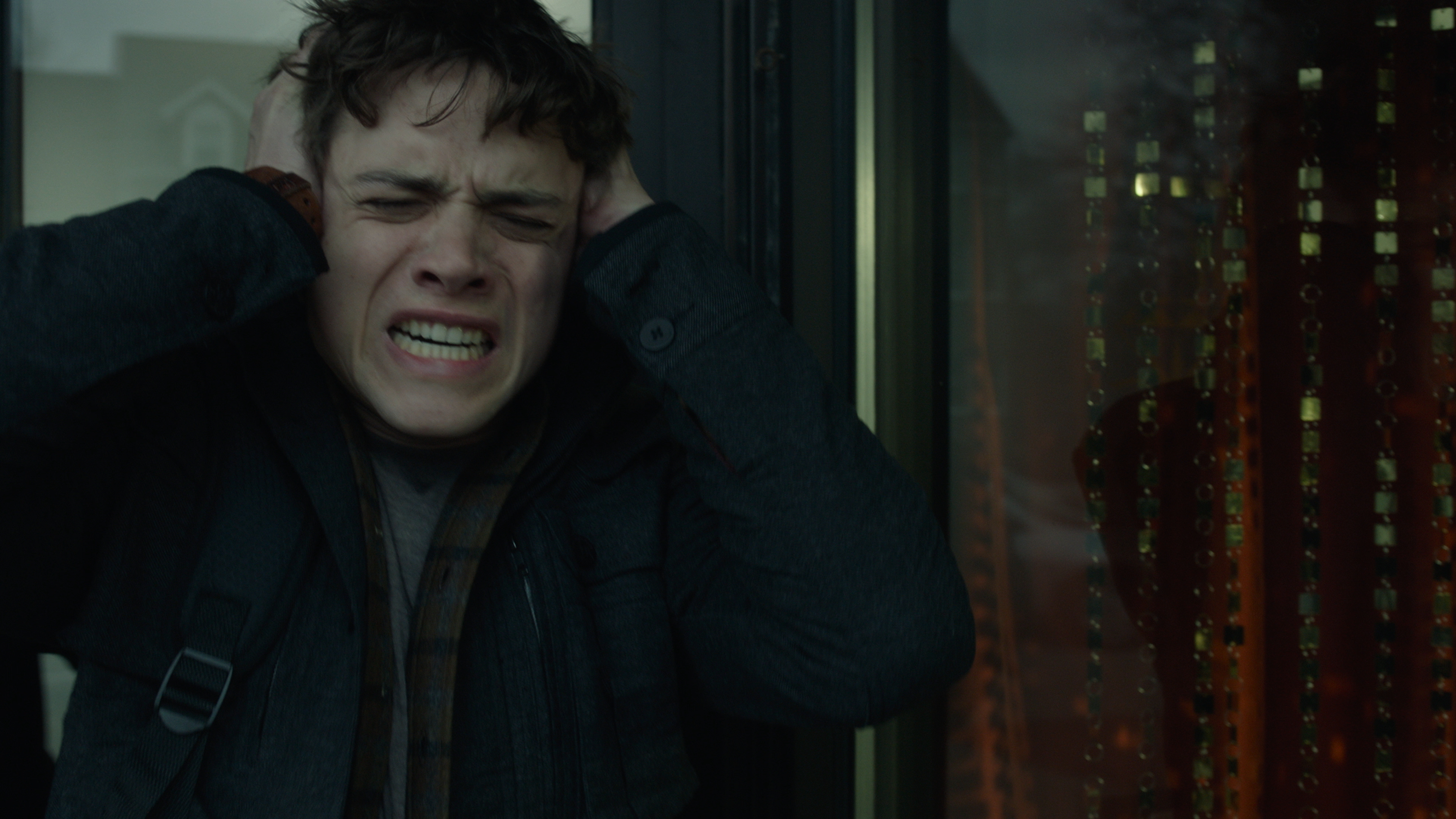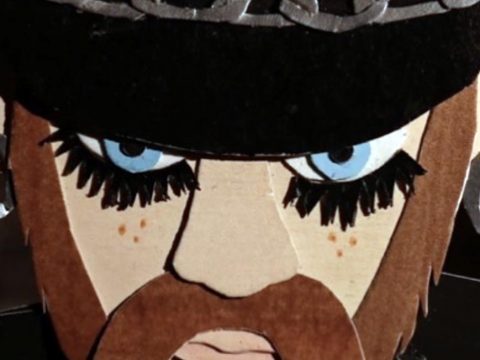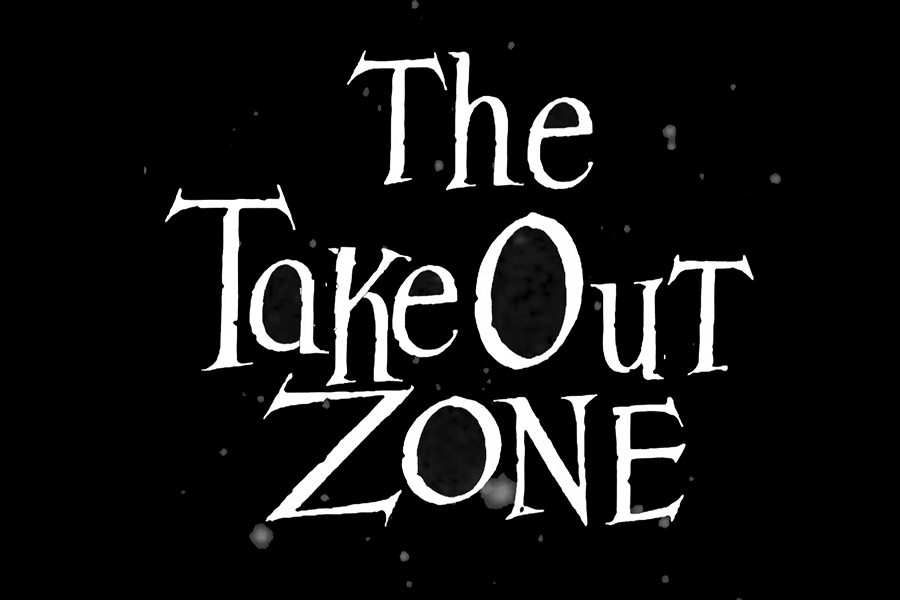
We’ve all had the experience of trying not to think about something: a painful memory, a powerful craving, a strange look from a partner or friend. Often times, it feels like the more we try to push those thoughts away, the harder they try to force their way in. In the end, though, whether our efforts fail or succeed, we get to move on. But what if there was something—a thought, an image, or even just a name—that needed you to let your guard down just once to take root in your mind? And what if that seed grew something dark that would slowly take over your reality, make all of your hidden fears and darkness bloom, and ultimately drive you to do the unthinkable? This is what lies at the heart of the story—and the terror—of The Bye Bye Man.
People commit unthinkable acts every day. Time and again, we grapple to understand what drives a person to do such terrible things. But what if all of the questions we’re asking are wrong? What if the cause of all evil is not a matter of what…but who?
From the producer of Oculus and The Strangers comes The Bye Bye Man, a chilling horror-thriller that exposes the evil behind the most unspeakable acts committed by man. When three college friends stumble upon the horrific origins of the Bye Bye Man, they discover that there is only one way to avoid his curse: don’t think it, don’t say it. But once the Bye Bye Man gets inside your head, he takes control. Is there a way to survive his possession?
Inspired by actual events, The Bye Bye Man is about Elliot, Sasha and John, three friends on the cusp of what should be the most exciting time of their lives. The brilliant but insecure Elliot (Douglas Smith, HBO’s Big Love) has always been driven by a desire for family and community—ever since he was orphaned as a child and raised by his older brother Virgil (Michael Trucco, Battlestar Galactica). Now, Elliot, his beautiful and empathetic girlfriend Sasha (Cressida Bonas in her film debut), and their hard-partying but good-natured friend John (Lucien Laviscount, Scream Queens) are moving in together and sharing their first house. But they soon discover that the house leads to the remnants of the Bye Bye Man, a supernatural force that terrorized unsuspecting victims decades earlier. After a party where Elliot accidentally discovers his name, the Bye Bye Man uses their friend Kim (Jenna Kanell, The Vampire Diaries), a troubled psychic, as a conduit into their minds and into our world. From there, he begins a malevolent campaign of twisting their realities—and worse.
Elliot’s insecurities boil over into paranoia, Sasha begins to waste away, and John slowly transforms into something angry and dangerous. As the Bye Bye Man preys on their minds and souls, he drags friends, family, and the community into his web of horror. For Elliot and the people he loves, life and death soon hinge on knowing what is real and what is not. Desperate to help them all, Elliot begins to investigate the Bye Bye Man’s past while trying to hold onto his own sanity. With help from unlikely sources, Elliot discovers that the only way to defeat him is to eliminate any memory of his name—including anyone who knows it.
The Bye Bye Man is directed by Stacy Title (The Last Supper, Let the Devil Wear Black) from a screenplay by Jonathan Penner (Let the Devil Wear Black), based on the “The Bridge to Body Island” by Robert Damon Schneck. It is produced by Trevor Macy (The Strangers, Oculus), Jeffrey Soros (Rules Don’t Apply) and Simon Horsman.
I recently sat down with Stacy Title and Trevor Macy and discussed everything from Leona Helmsley, the women in peril ideology and, of course, The Bye Bye Man. The interview started off with me double checking my recorder.
Downtown Weekly: I like to make sure it’s recording because there were a few times when it didn’t.
Stacy: It’s really bad trying to construct something with few notes or no notes.
Right!?!?
Stacy: I was a journalist. I was interviewing Leona Helmsley and my recorder didn’t work.
Trevor: Oh God.
What happened with that?
Stacy: I had to go back and redo it and she wasn’t as grotesque a piece as it would have been.
Trevor: Oh really?
Stacy: She said some really good things and I didn’t have any backup.
You can’t just say she said these things.
Stacy: She was in a really bad mood that day and it was a lost moment so I’m with you.
Is there anything you want to say she said now?
Trevor: [laughs]
Stacy: She basically was completely racist. That’s the stuff I wanted to use.
Trevor: That had to be frustrating.
Stacy: It was kind of fascinating. I was basically like, ‘whoa!” in terms of how she talked about people who worked for her and how she felt about certain guests staying in her rooms. It was pretty out there. But I have no proof of it so it’s fiction.
Trevor: It doesn’t exist.
Speaking of fiction, horror movies have long catered to a female crowd.
Trevor: Yes they have.
There are a lot of female protagonists – Jamie Lee Curtis in Halloween; Heather Langenkamp in Nightmare on Elm Street.
Stacy: Scream Queens
But not too many female directors in the horror genre.
Stacy: I think it’s a waste. I think it’s so strange. We like horror. We go to horror. We pay for horror, but we’re not the purveyors of it. There’s been some great movies directed by women that are scary, but not predominantly done by women. I do think it comes out of the sexism of the business. It’s just intrinsically there. A powerful job is usually not the woman’s job. In the movie business, women are more in casting or wardrobe. It just works out that way. It’s strange that I got this job. I feel privileged that Trevor gave me this opportunity. He did it because he knew I could do it. I don’t know if people understand women’s power. There are a lot of talented women out there who aren’t working.
Trevor: I think that’s right. I would have hired Stacy if she was a man in that I hired her for her skills. It would have been very easy for me to say, ‘you haven’t done anything in a little while.’ But I’ve been in the business for a while and I feel that I was right. Before we get off that, your question, by the way, was an excellent one, because probably 60% of our audience will be female. The idea that you don’t have female story tellers in that central seat is a little odd.
Stacy: You know, I find myself watching movies and it’s not, “oh that hair looks weird” or “that character wouldn’t wear those clothes.’ A director should do that, but it’s also the emotional part of it – really caring about every beat of everything – being real and authentic. I don’t know if that’s a female thing, but that’s certainly something I bring to it.
Trevor: I’ve worked with both genders who do that.
Stacy: Probably.
I’ve always been curious about what it is about horror movies that there are so many female protagonists and why horror appeals to females.
Stacy: The woman in peril is something that Laura Mulvey, the English philosopher talked about in the 60s or 70s. She’s an amazing thinker. What she talked about was subjects and objects. When you’re watching a movie, it’s the subject that you’re relating to. When women become objectified, it heightens the interest in them. A woman in peril is the object, not the subject. You’re not really connecting with her a someone you can live through, but she’s something that is threatened like a puppy, which is also an object. The opposite of subject and object is where the woman in peril comes from. It’s not my thought, it’s her thought. She’s a brilliant writer.
So maybe having the female be a heroine after all turns the sexism thing on its head?
Stacy: We hope.
Trevor: I don’t think we’ve objectified the women in this movie, in the sense that you said or the traditional sense.
Stacy: I don’t think we did. I worked hard not to.
Trevor: I think the trick is you have to relate to the characters – male or female, they all have to be real. You could argue, and I think you’d be right, that women have a higher bar in relating to real, grounded characters. Fine, maybe the experience of shared fear is more palpable to women than men. I don’t know the answer to that question, but I suspect that more successful horror movies tend to skew more female while less successful horror movies skew more male. I don’t know.
Why do you think that is?
Stacy: I think that women are harsher judges. I don’t know. I think that video games have affected the culture that goes to the movies. College admissions have been affected by them. Video games have taken smart or less smart guys out of the marketplace. That’s part of it. The other part of it is that women are taught to be polite and look over their shoulders and be afraid. I think that makes them perfect victims and hence, great viewers of horror.
Trevor: Everybody’s afraid, though. It’s hardwired into our beings. Men are taught not to act afraid, but they are. And they’re super welcome to our movie.
Stacy: I hope people aren’t playing the new Pokemon game and go to our movie. I think they’ll enjoy it. I think that men and women will enjoy this movie.
Plus, all the Oscar hopefuls are expanding nationwide and The Bye Bye Man is great counterprogramming.
Trevor: It is.
Stacy: And it’s Friday the 13th also. Let’s bring this terrifying new bogeyman to your consciousness. He’s really powerful. He gets closer and closer and gets you to do terrible things. I feel like that’s going to speak to people. They will go home and feel like he’s in the corner or he’s in their closet. He doesn’t have to touch you to hurt you.
So what movies maybe inspired you when you were making this?
Stacy: I think all the bogeyman movies were of interest so we wouldn’t overlap with them. There are so many great ones. Even down to Chucky, though he’s not a bogeyman, he’s an awesome, nasty piece of work. It’s so good. In terms of the horror that influenced me, the scariest movie from my childhood is Silent Scream. It’s a lesser known slasher movie. Barbara Steele is this wonderful, psychotic killer – a merciless, brutal killer. I got to see a lot of movies on my own as a kid. I talked my way into a lot of R-rated movies. My psyche was batted around. Polansky – there’s a moment from Repulsion that I quote in the movie. I loved [French new wave director Georges] Franju. I loved Hitchcock. I can’t say they inspired this literally as much as they gave me an inspiration for how they directed and how complete their vision was and I aspire to that.
Trevor: This shares DNA with a lot of movies. Rosemary’s Baby and The Shining are the most classically, “are you going mad or is something horrible happening?”
Stacy: And no one else believes you.
Trevor: And no one else believes you. You could just as easily say we were inspired by Candyman – I think a modern, nuanced version of that. I think we’re just as scary.
Well I liked Candyman.
Trevor: Me too.
Stacy: He’s great. That’s a great movie I think – when he tries to kiss her and all the bees come out of his mouth. Bye Bye Man is trippy in the same way I just want to say. We don’t have bees, but it’s trippy what upsets some of the characters. There are some bugs.
Bugs are creepy.
Stacy: Bugs are creepy when they come out of your face.
Trevor: I was thinking of the Martin Sheen movie, The Believers. Do you remember that?
Stacy: Yes.
Trevor: With the spider.
I saw that as a kid and I was like, “ugh!” In your own words, why should audiences see The Bye Bye Man?
Stacy: Challenge yourself to see if you’re not afraid of The Bye Bye Man.
Trevor: There are a lot of reasons to be scared in January. Friday the 13th is one of them. You haven’t had a lot of opportunities to be scared lately so look, we promise a fun ride. If we’ve done our jobs, we promise that when you leave the theater, you might be looking over your shoulder a little.
The Bye Bye Man is now playing in theaters.











